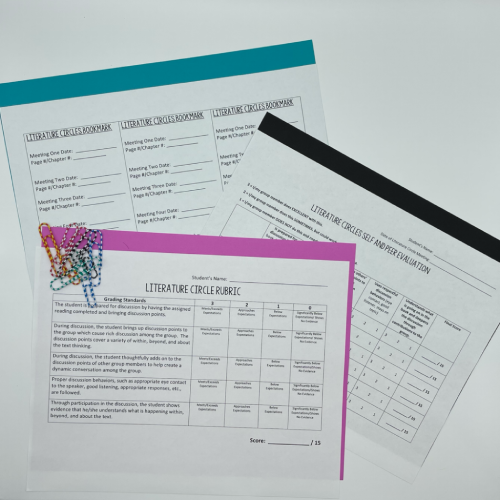Research. Once this word is spoken out loud in my classroom, I brace myself for the standard round of moans and groans that generally accompanies the announcement. I have made a lot of mistakes over my first few years of teaching in how I present research papers/projects to students and probably deserved the reception “research” elicited. I would make all of my students pick a topic dealing with “something unreal” or something about a certain time in history. I would create a list of topics to pick from and tell students that only one student could pick each topic because of library resources and such. I was living in a false reality because I was under the impression that students weren’t able to pick their own topics or find the resources to research a topic they selected. I can say teaching this way, that I took way too much control of the situation by limiting my students to a topic they probably didn’t care about. This caused them to take very little ownership of their research. So what solutions do I have to create the reverse effect? Keep reading…
Tip 1: Start with authentic questions
Spend time pre-writing to get students to consider what they truly wonder about. Do not put limits to their wonderings.
As always with Writing Workshop, I model to my students what I will be asking them to do with my own writing. Some questions I had were:
-What factors increase and decrease the chance of divorce?
-Why are female athletes more likely to tear their ACL’s than males?
-Do singers who write their own song lyrics experience more success?
-What are the best ways to increase blog traffic?
Give students time to jot down as many authentic questions that they have without worrying if they will be able to find enough research or if someone else in the class has the same topic. Bottom line: who cares? Give students time to wonder and see what shifts to the surface. Giving students the choice of what they’d like to discover provides buy in from the very beginning of the research process.
Tip 2: Pre-write before diving in
Don’t make students commit to a topic right away. Give them time to explore several topics. What I did this year was have my students pick their top three topics and write about why that topic interests them, what they already know about the topic, and what they’d like to find out. I did this by simply taking my top three sticky notes off of my topic brainstorming sheet and expanding them on separate pieces of paper as you can see below.
Giving students a chance to write about their top three questions allows them to reflect on which topic would truly be the best pick. I had several students this year have a topic they thought they would “for sure” go with, complete this activity, and change their mind.
Tip Three: Narrow down a purpose
I tried something for the first time this year after my students had selected their topic and conducted several days worth of research on their topic that I called, “Six Words or Less.” The purpose of this activity was to get students to think about what they really wanted to say to their reader about their topic. I asked them to do this in six words or less to challenge them to get down to the bare bones of what they hope their audience gets from reading/viewing their research findings. I was BLOWN AWAY by the six words they came up with. I put four charts around the room and had students go to one of the charts and write down their topic to save time. Here are the charts:
I then had students do a picture walk around the room and write down the names of students they would like to ask about their topic. This created an awesome class discussion. Up to this point in the school year, this is hands down my favorite and most powerful writing lesson I have done with students. The reason it was so powerful is because so often in teaching we forget to build in time for students to create a purpose in their work. I often explain purpose to children or have them infer the purpose for why we do what we do as readers and writers, but this was special because each student created an individual purpose in sharing the research they have found. Up until this point, they had just done a bunch of research on a topic.
Tip 4: Share, share, share
Students love to talk and share their ideas with one another. Not necessarily as a whole class because always sharing this way can get a little intimidating. One of my “go to” teaching techniques lately for sharing out reading and writing has been a small group share. I’m currently taking classes to receive my Masters as a reading specialist and read an article for class titled, “Engaging Adolescent Learners” by Fischer and Frey with the focus of activities that create a collaborative classroom atmosphere. In the article, they talk about a “Sounding Board” where students read their writing to a group of their peers and ask a series of four questions to get open and honest feedback from their peers.
Once students were at the point where they had their research and their purpose, I organized a sounding board where students asked each other the following questions in small groups:
I used a fishbowl format to model what the sounding board process would look like before students broke off into groups to complete the process. After students shared their research topic, purpose, and research, they asked students the questions from the slide above and took notes as the members of their group responded to them. The group became their “Sounding Board.” This process caused students to become really reflective not only about their topics, but to really think deeply and give appropriate feedback to their peers. There is no way I would have been able to have 25 successful writing conferences in the amount of time this took, and I felt confident each of my students walked away with excellent feedback.
Tip 5: Share research authentically
Instead of giving students parameters of exactly how the research must be shared, why not let them choose? Some topics lend themselves to certain ways of sharing, and by letting students select which mode would best complement their topic, they will most likely spend more time selecting and working on a means to communicate the purpose of their research. In my class, we spent time watching Ted Talks and brainstorming a list of ways to share. Here’s what we came up with:
I hope this blog post gave you at least one idea of a way to increase the level of student engagement during research projects. I would love to hear from you if there are things you have tried during research that have been effective!











